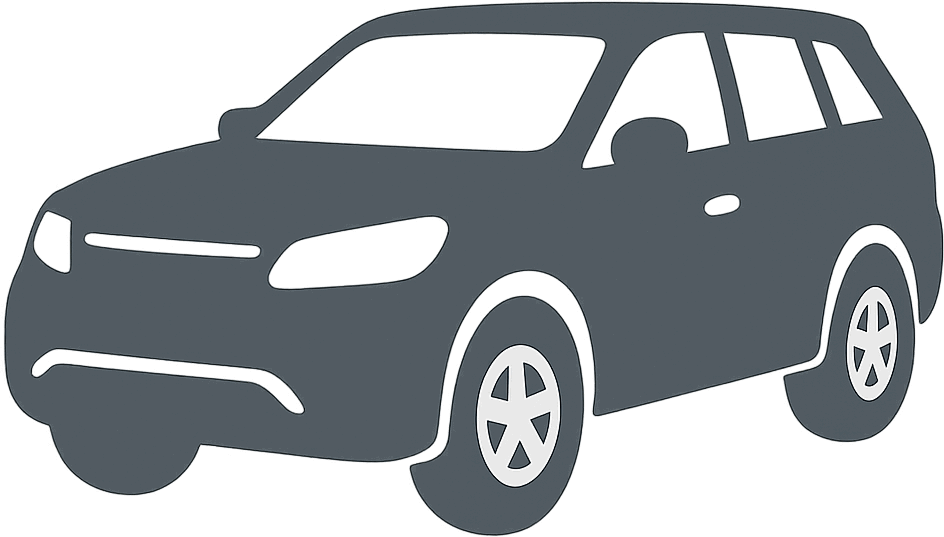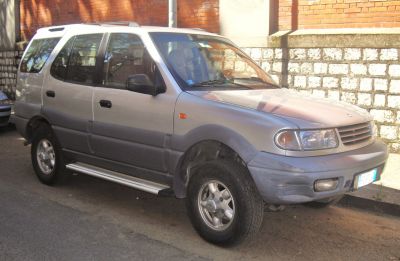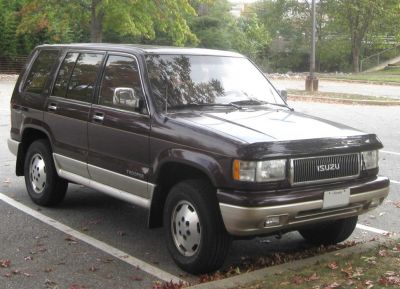 1981 Isuzu Bighorn (SUV) Dimensions, Size & Specs
1981 Isuzu Bighorn (SUV) Dimensions, Size & Specs
Measurements of the 1981 Isuzu Bighorn, engineered for optimal performance and comfort
| Dimensions | |
|---|---|
| Length: | 4470-4750 mm176.0-187.0 in14.7-15.6 ft |
| Width: | 1745-1760 mm68.7-69.3 in5.7-5.8 ft |
| Height: | 1845 mm72.6 in6.1 ft |
| Weight Specifications | |
| Curb Weight: | 1700-2090 kg3748-4608 lbs |
| Tire Specifications | |
| Rims Sizes: | 16-inch rims:
|
| Tire Size: |
|
The Isuzu Bighorn SUV, produced between 1987 and 2002, stands out as a robust and versatile mid-size sport utility vehicle. It features a length ranging from 4470 mm to 4750 mm (approximately 176 to 187 inches), offering a substantial footprint that balances interior space with maneuverability. The width varies slightly between 1745 mm and 1760 mm (69 to 69.3 inches), providing a stable and confident stance on the road and off it. The vehicle's height remains consistent at around 1840 mm to 1845 mm (72.4 to 72.6 inches), which enhances headroom and off-road capability while maintaining a commanding driving position. In terms of weight, the curb weight of the Bighorn ranges from 1700 kg to 2090 kg (3,748 to 4,609 pounds), reflecting variations in trim and equipment levels which contribute to its rugged utility and performance. The Bighorn rides on 16-inch rims sized 7JJ x 16, paired with tires measuring 245/70 R16, a combination that offers a balance of grip, comfort, and durability suited for both on-road handling and off-road adventures. Overall, the Isuzu Bighorn SUV represents a reliable and solidly built vehicle from the late 20th century, capable of providing a spacious and practical interior with the ruggedness expected from a capable SUV. Its size category places it comfortably in the mid-size SUV segment, making it a competitive choice for drivers seeking utility without excessive bulk.
Discover the standout features that make the 1981 Isuzu Bighorn a leader in its class
Have a question? Please check our knowledgebase first.
The Isuzu Bighorn (SUV) produced between 1987 and 2002 has a length that varies between 4470 mm and 4750 mm. In imperial units, this corresponds to approximately 14 feet 8 inches to 15 feet 7 inches. This size range reflects minor variations in model trims and manufacturing changes throughout its production period. These dimensions place the Bighorn firmly in the mid-size SUV category, offering a good balance between interior space and maneuverability.
The width of the Isuzu Bighorn (1987-2002) ranges from 1745 mm to 1760 mm, which converts to approximately 68.7 inches to 69.3 inches (about 5 feet 8.7 inches to 5 feet 9.3 inches). This width ensures a stable driving experience and ample interior space for passengers and cargo, typical of SUVs in its class during that era.
The height of the Isuzu Bighorn (1987-2002) lies within 1840 mm to 1845 mm, which is around 72.4 inches to 72.6 inches, or approximately 6 feet 0.4 inches to 6 feet 0.6 inches. This elevated height is conducive to off-road capabilities and provides good visibility on the road, characteristic of rugged SUVs designed for versatile terrains.
The Isuzu Bighorn from 1987 to 2002 has a curb weight ranging between 1700 kg to 2090 kg. Converted to imperial units, this is approximately 3,747 to 4,608 pounds. The variability in weight depends on the specific trim level, engine configuration, and optional equipment. This weight range provides a solid, durable build suitable for both on-road comfort and off-road resilience.
The Isuzu Bighorn from the 1987 to 2002 production period generally comes equipped with rims sized 7JJ x 16, paired with tires sized 245/70 R16. This tire and rim combination offers a balance of ride comfort, off-road capability, and rugged appearance, suitable for its SUV classification with a focus on versatility across different terrains.
The Isuzu Bighorn (1987-2002), with a length of up to 4750 mm (approximately 15 feet 7 inches), width of up to 1760 mm (about 5 feet 9.3 inches), and a height of approximately 1845 mm (6 feet 0.6 inches), generally fits into a standard residential garage. Most single-car garages are around 3 meters (10 feet) wide and 6 meters (20 feet) deep. While the width of the Bighorn is within typical garage limits, maneuvering space may be somewhat tight due to its SUV width and height. Owners with wider or shared garages should measure carefully before parking, but in general, it is compatible with standard garage dimensions in most cases.
Compared to its predecessor generations, the 1987-2002 Isuzu Bighorn generally saw a modest increase in overall size, enhancing interior comfort and cargo capacity. Early models released before 1987 were typically shorter and narrower. The extended length, width, and slightly increased height in the later Bighorn generation provided better stability, improved off-road capability, and more passenger space. These size increments reflected market demand for larger, more comfortable SUVs during the late 1980s and 1990s. Despite size increases, the Bighorn maintained its rugged SUV nature, balancing practicality with durability.
In terms of dimensions, the Isuzu Bighorn (1987-2002) fits comfortably within the mid-size SUV segment of the late 1980s to early 2000s. Its length, width, and height are comparable to contemporaries like the Toyota Land Cruiser Prado and Mitsubishi Pajero. For instance, the Bighorn's maximum length (~4750 mm / 15 ft 7 in) is competitive with other SUVs known for off-road ability. Its width (up to 1760 mm / 5 ft 9.3 in) offers a stable stance, while its height (up to 1845 mm / 6 ft 0.6 in) contributes to a commanding driving position. Overall, the Bighorn's dimensions underscore its market position as a versatile SUV capable of both daily driving comfort and tougher terrains.
The Isuzu Bighorn (1987-2002) is a rugged off-road capable SUV known for its durability and versatility. It often featured 4WD systems that provided excellent traction in various terrains. Engine options varied, including diesel and gasoline variants, tailored for efficient power delivery and towing capacity. The model emphasized a balance between utility and comfort, offering spacious interiors and robust construction. Its reputation for reliability made it a preferred choice in markets needing durable SUVs for both urban and off-road use through its production span. The Bighorn’s design and engineering reflected the practical demands of its era while maintaining a strong presence in the SUV category.
The Isuzu Bighorn (1987-2002) typically offers seating for five to seven passengers, depending on the configuration. Its relatively generous length and width for a mid-size SUV helped provide sufficient legroom and headroom for occupants. The vehicle was designed to accommodate families or groups with cargo space behind the rear seats, which could be expanded by folding seats down. While exact interior dimensions vary per trim and seating configuration, the Bighorn focused on maximizing usable space for comfort and utility in line with SUV standards of its time.
Discover similar sized cars.

| Production: | 1998-2005 |
|---|---|
| Model Year: | 1998 |
| Length: | 4650 mm183.1 in |
| Width: | 1810 mm71.3 in |
| Height: | 1920 mm75.6 in |

| Production: | 1992-2000 |
|---|---|
| Model Year: | 1991 |
| Length: | 4545-4660 mm178.9-183.5 in |
| Width: | 1745 mm68.7 in |
| Height: | 1850 mm72.8 in |
